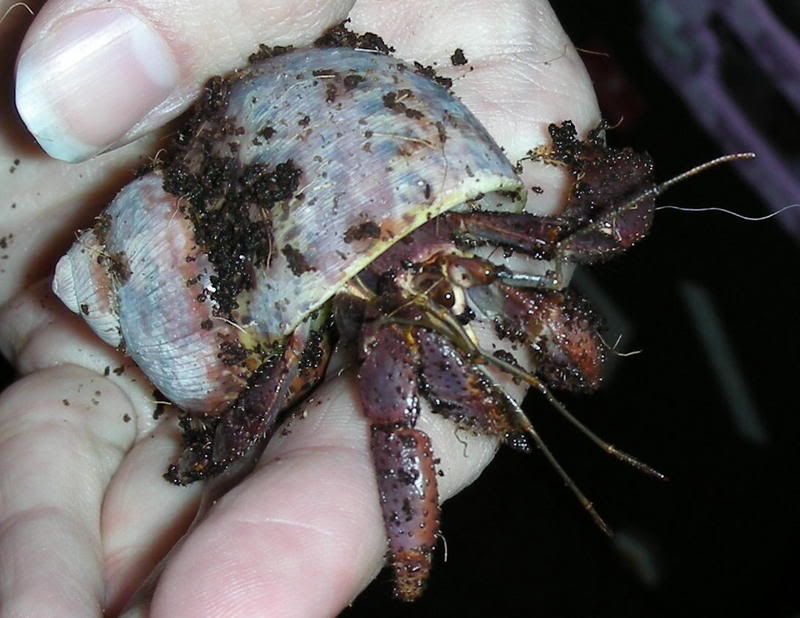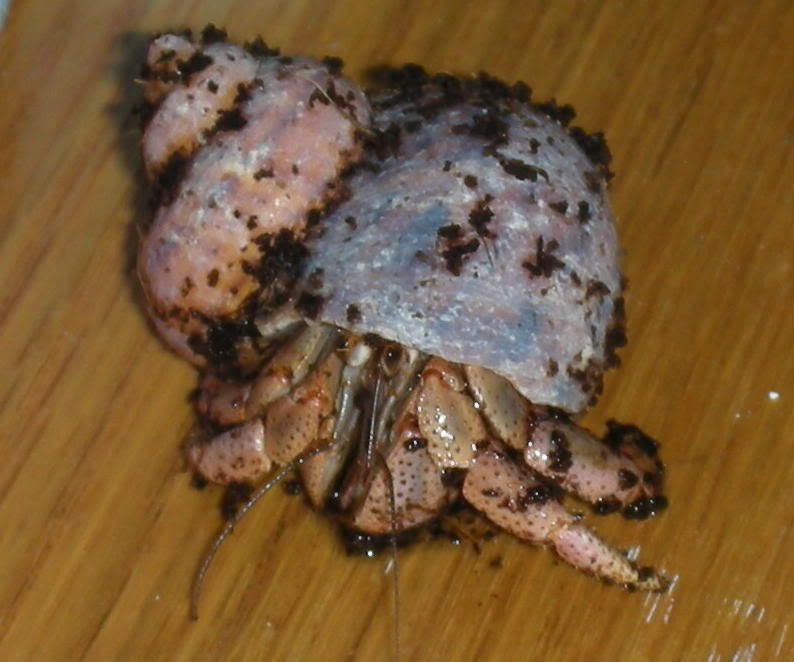Post
by annopia » Thu Mar 01, 2007 2:38 pm
this is a topic that has been confounding me for some time now. i know that it is generally accepted that (with PPs) darker coloring indicates either nutrition consumption or age/size. but what is going on with the crabs that do not follow this rule? i will give two examples, Sassy and Lila. they are both medium PPs, both have had molts with me (Lila at least four, Sassy one). they are in the same tank and recieve the exact same nutrition (an expansive list i draw from, with one fresh protein, nut, fruit, veggie, grain, and flower a day; meats/nuts etc are rotated out and served only 1 or 2 times a month for each specific type).
Sassy:

Lila:

yet Lila's coloring (and i've had her for over a year) is no where near as dark as Sassy's, and they have the same diet and size. have you guys experienced this? i know that straws are a bit of a different issue with light and other things, so i am talking strictly PPs here. i'd like to hear your thoughts.
Caroline
26 LHC: 6 PPs, 5 Es, 1 Straw, 6 Ruggies, 2 Indos, 1 Blueberry, 4 Violas, 1 Aussie


